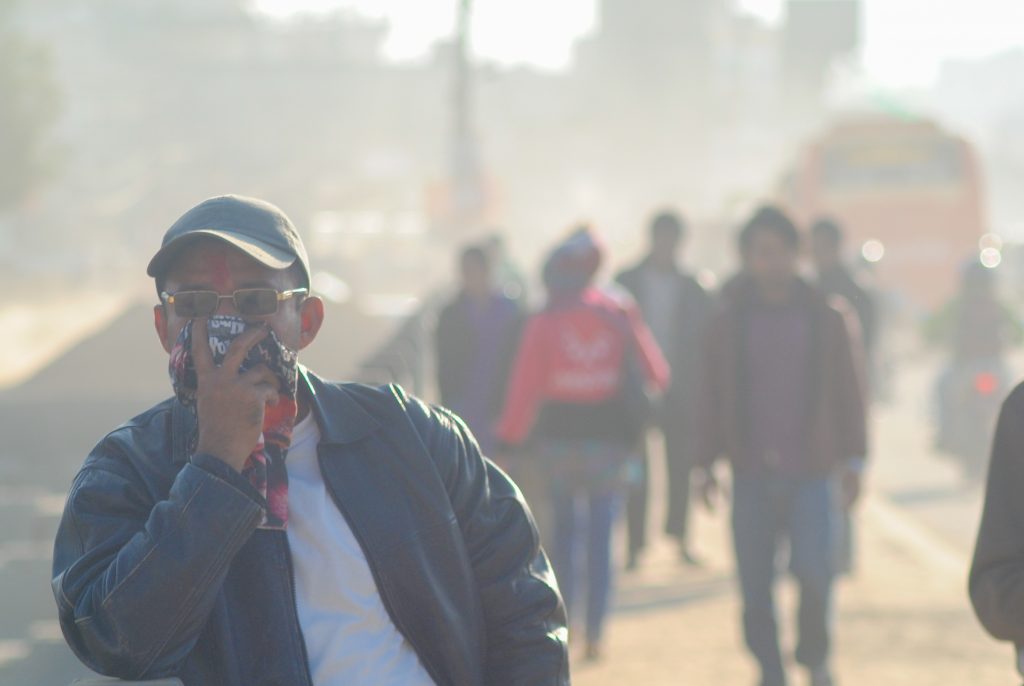
Dear Eartha, I’ve heard recently about the link between environmental issues and social justice. I don’t fully understand the connection, can you explain?
If you’ve ever seen photos of a climate change rally, you might have noticed signs that say things like, “Climate justice is social justice,” or “Environmental justice for all.” Though the connections might not seem obvious, these slogans hint at a fundamental truth: Some communities bear the burdens of environmental degradation more than others. And more often than not, those communities are made up of historically disadvantaged people. So while this column is far too short to adequately tell the story of environmental (in)justice, here’s a brief primer on why environmental work and social justice go hand-in-hand.
Environmental Justice 101

The environmental justice movement gained traction in 1982 when residents of a poor, rural, mostly black community in North Carolina protested the siting of a hazardous waste landfill in their town. The landfill was designated to receive soil contaminated with PCBs – chemicals suspected of causing cancer. When state officials ignored concerns about the potential for the toxins to leach into the local water supply, people laid in the streets to prevent trucks from accessing the landfill.
While the protest wasn’t successful – the waste was ultimately dumped in their community – the residents’ activism highlighted a disturbing trend. Across the U.S., polluting infrastructures like power plants, industrial sites, highways, and waste facilities are disproportionately cited in poor communities of color.
In fact, a 1987 report commissioned by the United Church of Christ found that race was the single most important factor in determining the location of toxic waste sites. A follow-up federal government study came to the same conclusion. Why? Because residents of middle-class white communities are more likely to have connections to the local government officials and zoning boards that can protect them. On the other hand, marginalized people often lack the finances to hire legal counsel or even the language to understand how these facilities could impact their health. It’s a lot easier to poison people who don’t have the resources to protest.
In the early 90s, environmental justice became federal policy. President Clinton signed an executive order in 1994 that brought more federal attention to these issues. Certainly, this growing awareness was beneficial, but that awareness alone hasn’t solved the problem of environmental injustice.
Environmental Justice = Social Justice

Fast forward to 2020. Decades of discriminatory housing policies have pushed minority groups and poor people to live in more polluted areas. Today, nearly half of U.S. Latinos live in communities where air quality does not meet EPA standards. A recent study in the Proceedings of the National Academy of Sciences found that black and brown communities are exposed to significantly more air pollution than other communities. And guess who lives closest to the petrochemical facilities that line the 85-mile stretch of the Mississippi River dubbed Cancer Alley? It’s not white people.
These disparities have been made even starker with the COVID-19 pandemic. Research from Harvard University found that many of the health conditions that increase the risk of dying from coronavirus are caused by long-term exposure to air pollution. Back in Cancer Alley, St John the Baptist parish outside of New Orleans has the highest COVID death rate in the country of any county over 5,000 people. Imagine being more likely to suffer respiratory illness and ultimately die from the disease because of years of discriminatory housing and land-use policy. It’s hard to wrap your head around.
Finally, perhaps unsurprisingly, the U.S.’ Fourth National Climate Assessment found that people of color are among the most vulnerable to negative climate change impacts. Think about a major hurricane like Katrina – poor people, a disproportionate number of whom are people of color, have fewer resources to evacuate or completely move out of harm’s way. And in the aftermath, they have a harder time recovering, and they receive less federal aid.
Moving Forward Together
Dr. King said, “Injustice anywhere is a threat to justice everywhere.” I think that applies to the environmental movement, too. If we create a system wherein only some people have access to clean air, water and soil, healthy communities, safe housing, and clean energy, have we truly succeeded? Instead, let’s focus on what matters most – a cleaner, fairer, better world for all of us, not just a privileged few.
